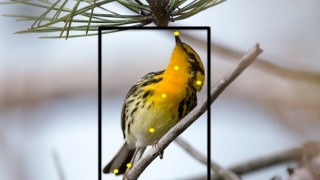
A research project, collaborated on by Cornell Lab of Ornithology and Visipedia, has led to the development of a sophisticated bird identification app. The software’s advanced algorithm is capable of recognizing hundreds of different bird species from photos.
The app, known as Merlin Bird Photo ID, can work out the identities of some 400 birds common to Canada and the United States.
According to Merlin Project Leader Jessie Barry, Merlin Bird Photo ID manages to find the identity of a given bird and place it within its “top three” results section around 90 percent of the time. “It’s designed to keep improving the more people use it,” added Barry, referring to Merlin’s machine-learning technology.
Merlin users simply upload a photo of an unidentified bird and tell the application where and when the image was snapped. Users then draw a box around the bird, thereby ensuring the algorithm doesn’t get confused by some of the surrounding foliage or landscape. They are then tasked with selecting the creature’s bill, eye and tail. Once these steps have been successfully executed, the app gets to work and presents a result within seconds. The software not only recognizes the bird species but presents users with additional photos and sounds of the bird in question.
Serge Belongie, a computer science professor at Cornell Tech, explained that computers are far superior to humans when it comes to processing images. “They can organize, index and match vast constellations of visual information such as the colors of the feathers and shapes of the bill,” he explained.
However, while Merlin offers a powerful indexing and identification service, it relies heavily on the work of human beings. Merlin accesses a vast catalogue of thousands of bird images, all of which have been pre-identified by ornithologists and bird enthusiasts. The algorithm also takes advantage of a bird sighting database, eBird.org, to narrow down its search and more accurately hone in on a particular bird’s identity.
On June 8, the findings of the project will be presented at the California Institute of Technology at the CVPR conference in Boston.
Top image credit: Christopher L. Wood
